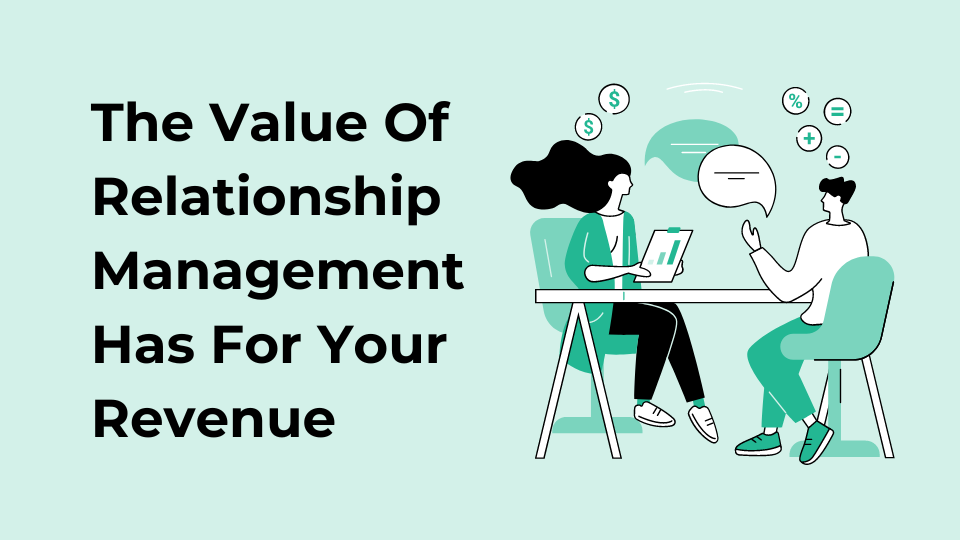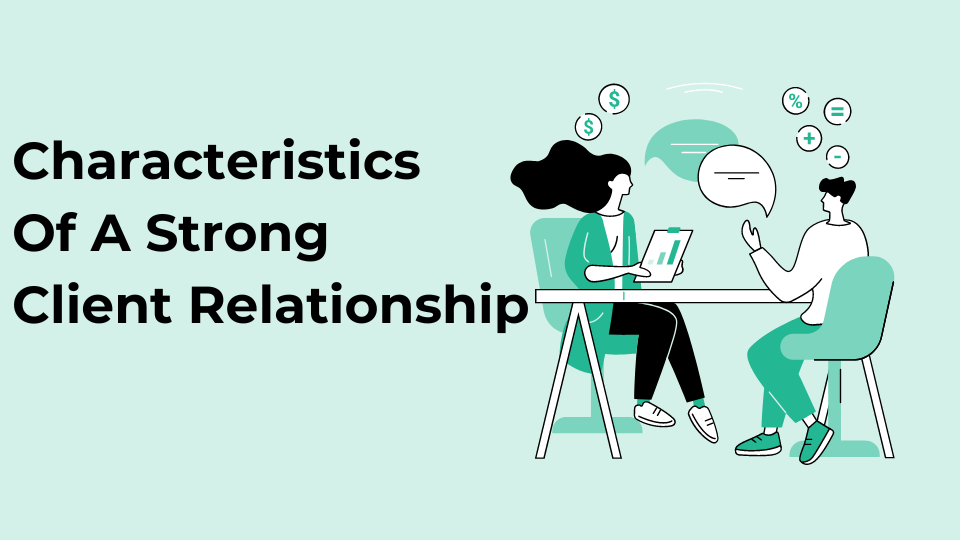Having good customer relationships is good for your business. Makes sense, right?
But why exactly? How does it benefit you? And how can you manage customer relationships to make for better business?
This is your guide to building customer relationships that enable your business to grow.
TL; DR
Customer relationship management helps to retain valuable customers and increase the value you get from others. By understanding what customers wants and needs are and personalising your communications with them, businesses can significantly increase their revenue.
Understanding customer relationship management
Customer relationship management (CRM) is a field that’s grown rapidly in the last few years, as businesses look to standardise the way they develop customer relationships.
There are a range of different tools and software that are used to promote visibility, transparency and performance across all customer activities.
There are two main focuses of CRM:
- To identify and retain profitable customers
- To improve the profitability of customers that provide less value
Achieving either (or ideally both) of these goals can make a significant impact on business performance. According to Hubspot, a 5% increase in customer retention can increase revenue by up to 95%.
With so much to gain, the importance of building a good customer relationship is hard to understate.
Types of customer relationship management
Developing customer relationships is about more than just being on good terms. While that’s important, a good customer relationship is one that also delivers mutual benefit to both parties.
There are three main categories that sit within customer relationship management. While all are important, businesses tend to focus on just one aspect of CRM that’s the most relevant to the way they operate.
Operational
Operational CRM is about enabling good marketing, sales and customer service. It’s how businesses ensure they’re working collaboratively with customers to do core business activities constructively and profitably.
It provides feedback on marketing campaigns, customer satisfaction and purchase data that can be used to improve systems and generate leads.
Read more: Customer relationship management advice
Operational CRM also helps to automate processes and create efficiencies, which makes it well suited to e-commerce, retail and other businesses with short sales cycles with repeat customers.
Analytical
First and foremost, the goal in analytical CRM is to improve customer satisfaction.
Analytical CRM is used to understand market trends and customer wants and needs. It’s used by businesses looking to stand out from their competition and differentiate themselves in new, desirable ways.
Collaborative
Collaborative CRM enables businesses to share customer information with each other and use that data to improve customer experiences.
By getting access to data that was previously unknown, businesses can make informed decisions about how to appeal to customers.
It’s often used when businesses are innovating or developing new products in order to understand how to satisfy customers in areas they have limited experience in.
Characteristics of a strong client relationship
So what does a good customer relationship actually look like? Measuring any relationship is hard to do – it’s subjective and based on a wide variety of intangible factors.
However, there are traits that exist in good relationships that make for a smooth, profitable work environment for both you and your customers:
- Excellent communication across matters that impact both parties
- Knowledge sharing and a desire to help each other improve
- Exceeding expectations wherever possible
- Sharing opinions openly, particularly when it’s helpful to the other party
- Positive, can-do attitudes on both sides
These factors manifest in different ways for different businesses. There may be other aspects of a good relationship between yourself and your customers, but these five characteristics should always be in place.
By monitoring your relationship with these characteristics in mind, you can identify signs that your customer relationship is in poor shape and take action to remedy the areas that are lacking. This is one of the most important features of customer relationship management.
Value of relationship management on your revenue
There are a range of different ways good customer relationships feed through to better business revenue.
1. You know your customers better
A CRM system keeps information about your customers, including their name, position, contact details, relationships with other contacts in your database…even their birthdays.
All of this data helps you to personalise your communication with customers and relate to them better.
You can also access all of your past communications with them, which adds to the context and allows you to customise the way you engage with them.
Critically, when you have more than one person in your business dealing with customers, your CRM will ensure everyone can see the latest client communications. This prevents annoying your customers by needing them to restate what they have already told someone else.
2. You can segment your audiences
One of the key aspects in developing customer relationships is communicating to customers in an appropriate manner for the stage they’re at.
You’d speak to a loyal, repeat customer in a different way than a prospective first time customer, and so on.
CRMs allow businesses to split their entire audience into segments based on where they’re at in the customer journey. Again, this means you can customise your communications to better suit individuals at different stages.
3. Improved customer retention
We mentioned earlier the potential impact of customer retention on revenue and how significant it can be.
There are three key ways CRM enables you to retain customers
- Learning. You’ll learn about who your customers are, what they value, what their needs are, and how you can fulfil those needs.
- Organisation. Become more efficient by organising your business better and automate processes to better suit customers.
- Optimisation. All of this information allows you to optimise the way you communicate and engage with your customers.
For example, customer retention is improved by reminding you about appointments, sending follow up emails, or identifying customers who you haven’t engaged with in a while.
4. Better understanding of customer need
When you’re paying attention to strategies to strengthen customer relationships, you can track purchasing habits and anticipate their needs.
For example, a subscription-based business can contact a customer shortly before their subscription ends to make it easy and attractive for them to sign up again.
5. Secure data protection
Using a dedicated CRM tool means the customer data you hold is protected securely.
Data protection is becoming increasingly important, and businesses that breach privacy regulations can face legal ramifications and should expect to lose customers as a result.
On the flip side, those that can showcase a commitment to protecting customer data are able to use it in part of their overall package to attract and retain customers.
6. Faster customer responses
When customers contact you with queries, the quicker you can reply, the better. CRM systems allow businesses to create automated response messages whenever customers reach out.
Responses allocate query numbers, outline the likely time to respond and reassure customers that their message has been received and is being processed.
This all creates improved customer satisfaction and helps customers to be seen and heard.
Take home message
Business relationship management is a critical function for both B2B and B2C companies. The more effort you put into managing customer relationships, the more benefit you’ll extract from it.
The good news is, the investment you put into CRM activities often pays for itself by enabling you to create efficiencies, automate processes and improve your revenue.
Not only that, but good customer relationships helps in invoices getting paid faster too, which improves business cash flow.
With any number of affordable tools to help with your customer relationship management efforts, there really is no excuse not to make it a priority in your business.
Related News
Check out related articles & resources.




